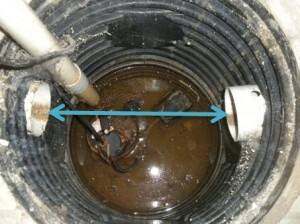It’s time to start getting your home ready for spring.
Part 1: Wet basements are the biggest problem.
Most basement water problems are caused by exterior landscaping and hardscaping. As a MN home inspector for the past 27 years, I have found this condition is seldom repaired until it becomes a problem. What I mean is until a homeowner sees water they assume nothing is wrong. This is not true. Actually, small amounts of basement moisture can be more destructive than large water events, such as flooding. Why, because as water sits on the walls it deteriorates the concrete, fungal growth begins to take hold, and a force, hydrostatic pressure, begins to push the foundation in. The longer these conditions exist the more apt they are to develop into something substantial.
When I inspect a home for a client, I always ask them, at the beginning of the inspection, what type of concerns they may have in purchasing this home. Almost always in the top 3 is that they do not want moisture in the basement. After inspecting over 19,000 homes, I would estimate over 85% have some sign of moisture in the basement. That is such a high percentage, that prior to inspecting the basement, I can almost answer their initial concern. Yes, this home has basement dampness.
9 out of 10 times the cause of a wet basement is poor slope around the foundation. Typically, this is corrected by raising the grade and hard surfaces so they slope away from the basement. It’s so simple.
This spring it may be a good time for you to check the slope around your house…before it’s a problem.
Doug Hastings
MN Home Inspector, Minneapolis & St. Paul
ASHI Certified Inspector, ACI
Kaplan University, Home Inspection Lead Instructor
Check out our Facebook page and ‘Like’ Cities Inspection for additional home tips.







